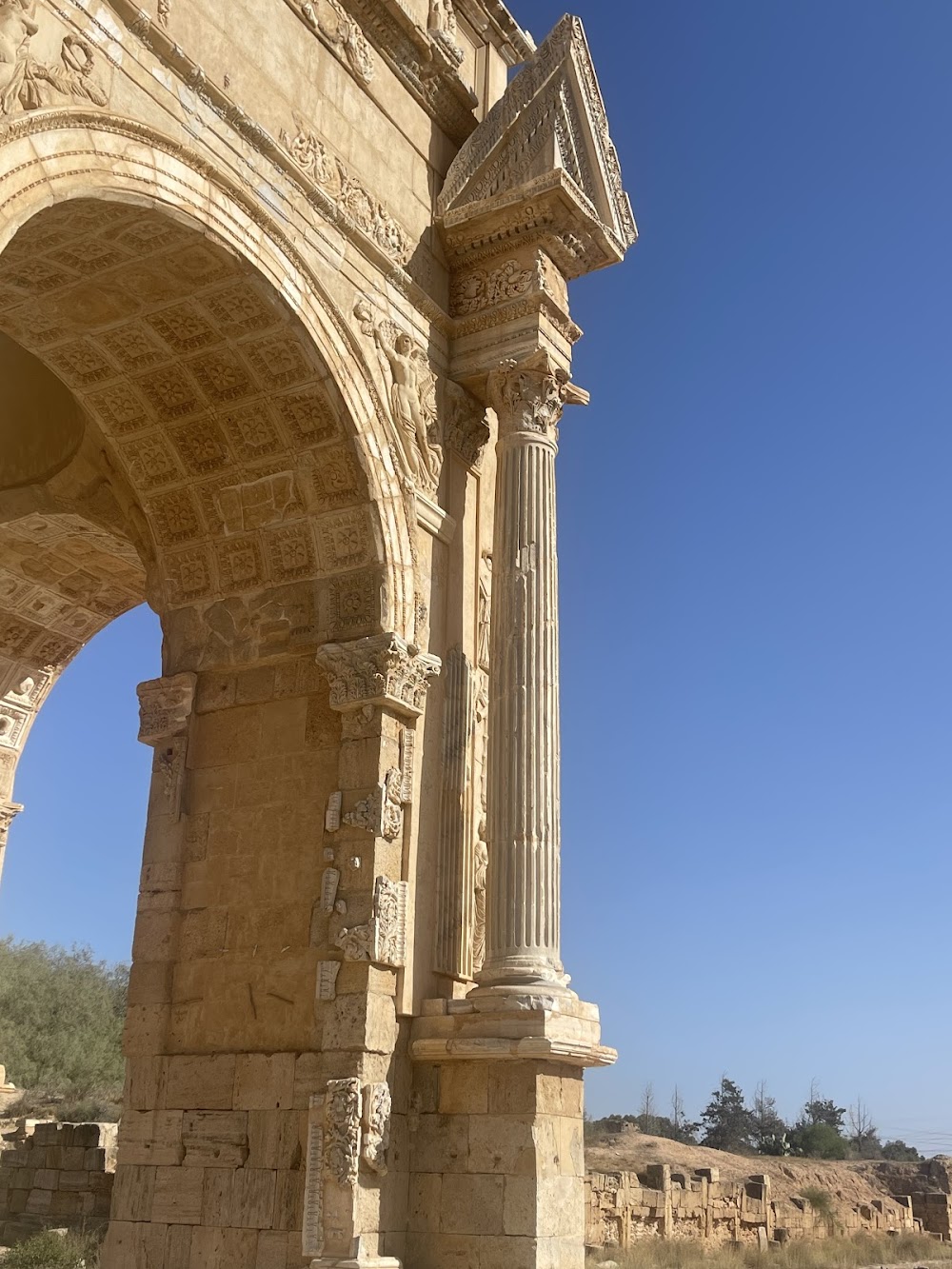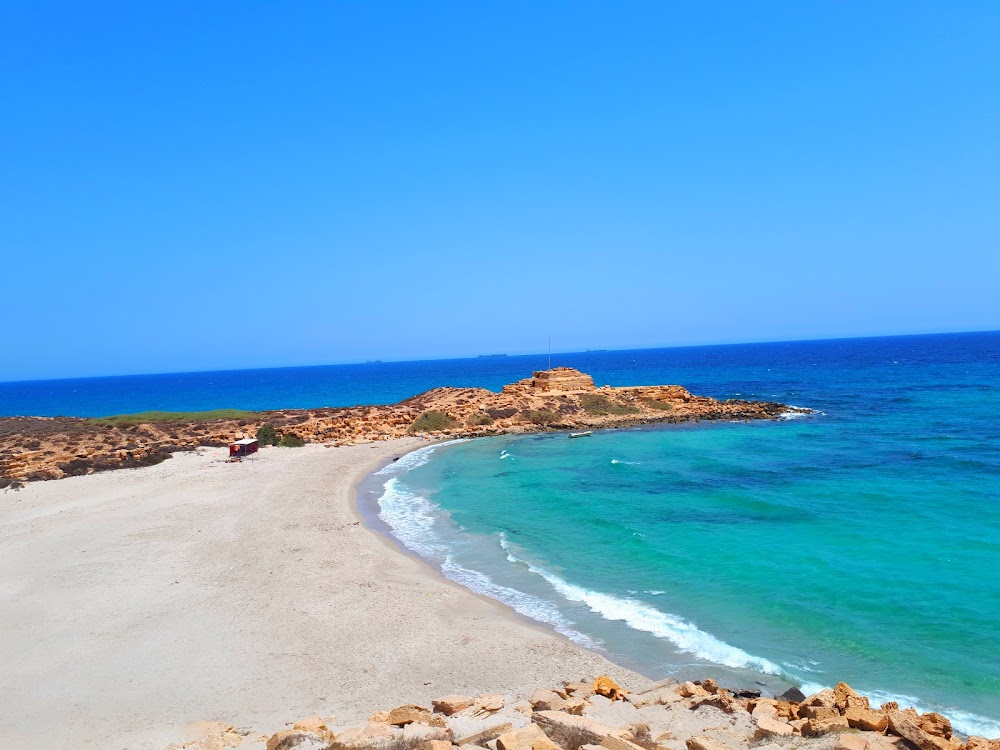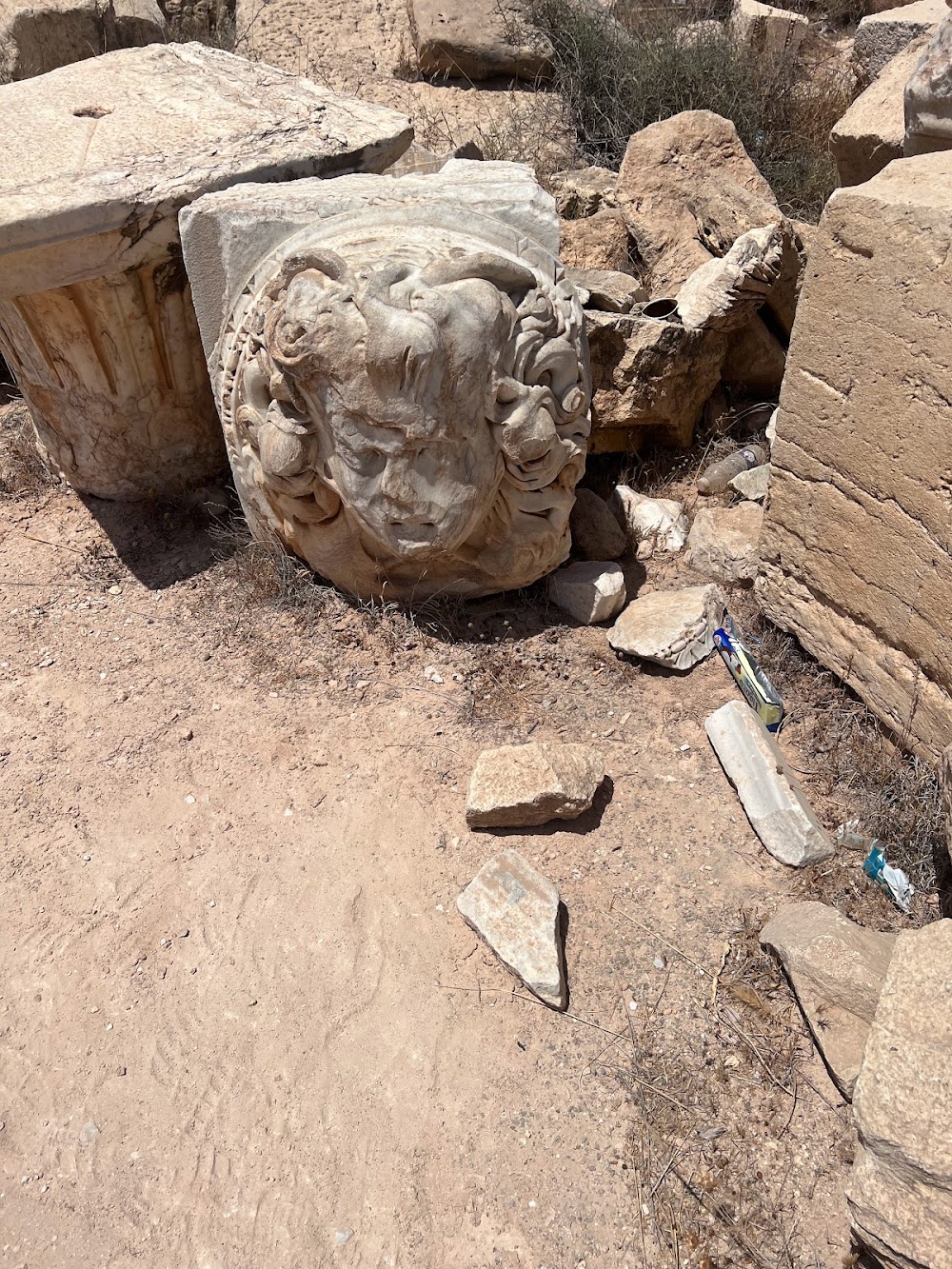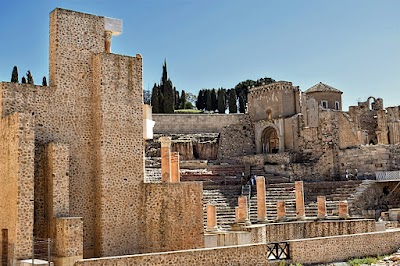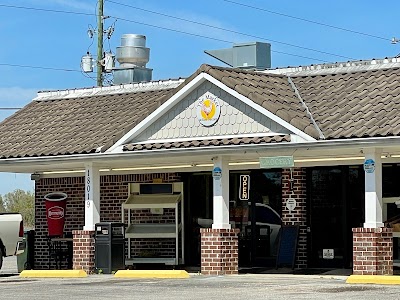Arch of Septimius Severus (قوس سبتيموس سيفيروس)
Overview
The Arch of Septimius Severus stands majestically in the ancient city of Leptis Magna, nestled in present-day Al Khums, Libya. Erected in AD 203, this monumental arch honors the Roman Emperor Septimius Severus and his two sons, Caracalla and Geta. Built during a period of prosperity under Roman rule, the arch served as an impressive gateway to the city, symbolizing the might and grandeur of the Roman Empire.
Constructed from both limestone and marble, the arch reaches approximately 21 meters in height and 23 meters in width. Its design follows the classic format of Roman triumphal arches, featuring three distinct archways. The central archway is the most prominent, flanked by two smaller arches on either side. The structure is adorned with intricate carvings and reliefs that depict scenes of military victories and divine endorsements. These sculptures not only celebrate the achievements of Septimius Severus but also assert the emperor's divine right to rule—an essential theme in Roman propaganda.
The construction of the arch was a remarkable feat of engineering and artistry. Skilled craftsmen and laborers, likely sourced from various regions of the Roman Empire, contributed their talents, including expert stonemasons and sculptors. Local quarries provided the limestone and marble, which were meticulously carved and fitted together with utmost precision. The detailed reliefs were crafted on-site, illustrating scenes of battles, sacrifices, and the emperor's triumphant return to Rome. These carvings showcase the exceptional skill and artistry of Roman craftsmen.
Inscriptions on the arch offer valuable historical insights. One inscription dedicates the monument to Septimius Severus and his sons, highlighting their commitment to the Roman state and their divine favor. Another significant inscription praises Severus' military campaigns in Parthia and Arabia, emphasizing his role as a conqueror and protector of the empire.
The arch was not merely an isolated structure; it was part of a larger urban landscape. Serving as the main entrance to the city's forum, it acted as a focal point for processions and public ceremonies. Its strategic location ensured that every individual entering or exiting the forum passed beneath its grand arches, constantly reminded of the emperor's power and glory.
Over the centuries, the arch has witnessed the passage of time and the elements. During the Vandal and Byzantine periods, Leptis Magna underwent significant transformations, and the arch sustained some damage. However, its robust construction has allowed it to endure through the ages. Rediscovered in the 19th century by European explorers, the arch and the surrounding ruins of Leptis Magna captured international attention, leading to ongoing efforts to preserve and study these remarkable remnants of Roman civilization.
Today, the Arch of Septimius Severus stands as a significant historical and cultural landmark. It serves as a reminder of a bygone era when Leptis Magna thrived as an integral part of the Roman Empire. Archaeologists and historians continue to explore the arch, uncovering new details about the lives and times of those who built and traversed beneath it. This magnificent structure not only narrates the story of a powerful emperor but also reflects the enduring legacy of Roman architectural and artistic achievement, captivating visitors from around the world.


